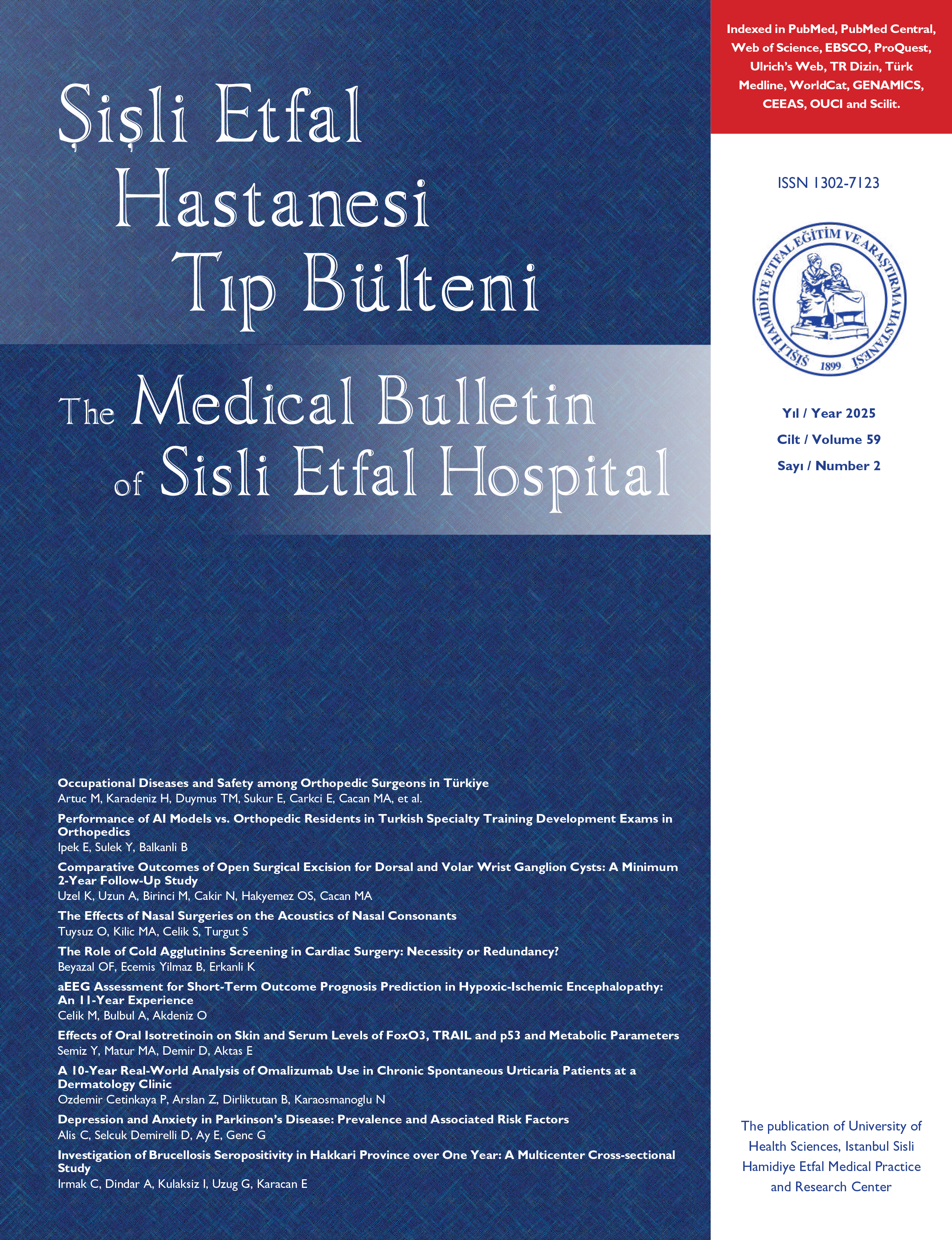
Comparison of the Oral Steroids, Macrolides and Combination Therapy in Nasal Polyposis Patients
Fatih Tetik1, Arzu Yasemin Korkut2, Kerem Sami Kaya2, Irmak Ucak3, Irfan Celebi4, Berna Uslu Coskun21Department of Otorhinolaryngology Head and Neck Surgery, Gaziosmanpasa Taksim Training and Research Hospital, Istanbul, Turkey
2Department of Otorhinolaryngology Head and Neck Surgery, Sisli Hamidiye Etfal Training and Research Hospital, Istanbul, Turkey
3Department of Otorhinolaryngology Head and Neck Surgery, Istanbul Sultan Abdulhamid Han Training and Research Hospital, Istanbul, Turkey
4Department of Radiology, Vehbi Koc Foundation American Hospital, Istanbul, Turkey
Objectives: In this study, our aim was to compare oral steroid therapy with macrolide therapy and with oral steroid + macrolide (combine) therapy in patients with nasal polyposis (NP).
Methods: All patients were treated with nasal steroid therapy for eight weeks and divided randomly into three groups as follows: Oral steroid group, oral macrolide group and combine group. All patients underwent endoscopic staging, radiological grading, odour testing and completed the sino-nasal outcome test-22 (SNOT-22) questionnaire before and after treatment.
Results: Significant improvement was observed in all parameters after treatment in all three groups. All parameters were significantly better in the combined group than in the macrolide group. Comparison of the oral steroid group and macrolide group revealed significantly better radiological grading and odour test changes for the oral steroid group, but no statistically significant differences existed according to endoscopic staging and SNOT-22. The post-treatment SNOT-22 score was significantly better in the combined group than in the steroid group. A comparison of the combined and steroid groups showed better results for the combined group for all parameters, but the differences were not significant.
Conclusion: All treatment protocols were effective and the successful use of macrolide indicates its potential as an alternative in patients with contraindications to oral steroid treatment. The combined treatment may demonstrate significantly better results than steroid treatment alone if larger studies with more patients are performed.
Comparison of the Oral Steroids, Macrolides and Combination Therapy in Nasal Polyposis Patients
Fatih Tetik1, Arzu Yasemin Korkut2, Kerem Sami Kaya2, Irmak Ucak3, Irfan Celebi4, Berna Uslu Coskun21Gaziosmanpaşa Taksim Eğitim Araştırma Hastanesi, Kulak Burun Boğaz Kliniği, İstanbul
2Şişli Hamidiye Etfal Eğitim ve Araştırma Hastanesi, Kulak Burun Boğaz Kliniği, İstanbul
3İstanbul Sultan Abdülhamid Han Eğitim ve Araştırma Hastanesi, Kulak Burun Boğaz Kliniği, İstanbul
4Vehbi Koç Vakfı Amerikan Hastanesi, Radyoloji Kliniği, İstanbul
Objectives: In this study, our aim was to compare oral steroid therapy with macrolide therapy and with oral steroid + macrolide (combine) therapy in patients with nasal polyposis (NP).
Methods: All patients were treated with nasal steroid therapy for eight weeks and divided randomly into three groups as follows: Oral steroid group, oral macrolide group and combine group. All patients underwent endoscopic staging, radiological grading, odour testing and completed the sino-nasal outcome test-22 (SNOT-22) questionnaire before and after treatment.
Results: Significant improvement was observed in all parameters after treatment in all three groups. All parameters were significantly better in the combined group than in the macrolide group. Comparison of the oral steroid group and macrolide group revealed significantly better radiological grading and odour test changes for the oral steroid group, but no statistically significant differences existed according to endoscopic staging and SNOT-22. The post-treatment SNOT-22 score was significantly better in the combined group than in the steroid group. A comparison of the combined and steroid groups showed better results for the combined group for all parameters, but the differences were not significant.
Conclusion: All treatment protocols were effective and the successful use of macrolide indicates its potential as an alternative in patients with contraindications to oral steroid treatment. The combined treatment may demonstrate significantly better results than steroid treatment alone if larger studies with more patients are performed. (SETB-2018-07-095)
Manuscript Language: English



















